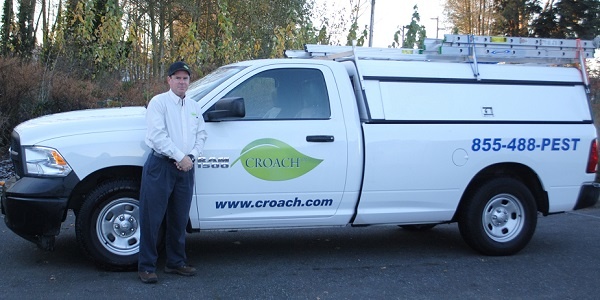Effective Bug Control Approaches for Long-Term Results
When it comes to reliable bug control methods that produce withstanding results, an extensive method is key. As we navigate through the intricacies of bug control methods designed for long-term effect, the combinations of various strategies is extremely important.

Integrated Bug Management (IPM)
Carrying Out an Integrated Pest Administration (IPM) technique is important for successfully dealing with parasite issues in a environmentally mindful and lasting manner. IPM is an extensive method that concentrates on long-term prevention of bugs via a combination of methods such as biological control, environment adjustment, alteration of cultural methods, and using immune ranges. By incorporating these numerous methods, IPM aims to lessen making use of chemical pesticides, therefore reducing potential harm to the environment, non-target organisms, and human health and wellness.
When insects are identified, the following step is to implement a mix of control measures based on the details insect species, the level of the invasion, and the potential dangers involved. This customized method not just efficiently manages parasites however additionally assists in preventing future break outs, making IPM a affordable and lasting service for parasite control.
Proper Hygiene Practices

Structural Repair Services and Exemption
Effective parasite control approaches usually require architectural repair services and exemption procedures to strengthen buildings against pest invasion. Structural repair work include repairing any cracks, spaces, or openings in the structure's structure, walls, roofing system, or windows that pests can exploit to access. By sealing these access factors, you can substantially decrease the possibility of pests such as rats, bugs, and other unwanted intruders from penetrating your property.
In enhancement to repair services, executing exclusion actions is crucial for lasting insect control success. This involves setting up barriers or deterrents to avoid insects from entering the framework. Common exemption techniques include setting up door sweeps, displays on windows, and mesh vents to maintain bugs out while still allowing for correct ventilation.
Normal evaluations to identify and resolve prospective access points, incorporated with proactive architectural repair work and exemption strategies, create a robust protection against bugs. By focusing on these steps, residential property proprietors can produce an inhospitable atmosphere for parasites, ultimately bring about long-term insect control success and a pest-free living or functioning space.
Natural and Eco-Friendly Solutions
To enhance the structural repair services and exemption measures targeted at strengthening buildings against pest invasion, discovering natural and green solutions presents a sustainable technique to lasting pest control. Natural insect control approaches leverage biological, mechanical, or physical steps to handle and remove parasites without depending on synthetic chemicals. For example, presenting all-natural killers like ladybugs to battle aphids in yards or making use of diatomaceous planet to control crawling insects work green remedies. In addition, using strategies such as plant turning, maintaining Continue proper sanitation practices, and securing entrance factors can help protect against pest infestations without damaging the setting.
Green parasite control options not only lower the ecological impact of traditional chemical pesticides yet likewise promote biodiversity and find total environment health and wellness. By avoiding making use of severe chemicals, all-natural bug control techniques contribute to a much safer living environment for human beings, animals, and beneficial pests. Embracing these lasting techniques not only addresses instant pest issues yet likewise ensures lasting insect monitoring with minimal eco-friendly disruption.

Routine Tracking and Upkeep
Routine surveillance and upkeep techniques play a crucial role in sustaining long-term insect control effectiveness within property and industrial settings - clovis pest control. Consistent monitoring enables the early detection of pest infestations or indicators of parasite task, making it possible for timely intervention before the situation escalates. Normal examinations of vital locations susceptible to pest intrusion, such as entry factors, storage space areas, and landscaping features, are important to recognize and attend to prospective insect issues proactively
Moreover, regular maintenance of the home is vital in reducing aspects that draw in insects, such as food resources, water accumulation, and sanctuary chances. Executing correct cleanliness practices, fixing architectural damages, and removing mess can add considerably to creating an environment much less welcoming to bugs. Additionally, recurring maintenance of pest control procedures, such as traps, lures, and exemption techniques, guarantees their effectiveness in hindering insects with time.
Verdict
To conclude, adopting an Integrated Insect Monitoring approach, preserving appropriate hygiene practices, carrying out architectural fixings and exclusion, using all-natural and eco-friendly remedies, as well as regular tracking and upkeep work strategies for achieving long-lasting bug control outcomes. clovis pest control. By applying these approaches in a comprehensive and systematic fashion, organizations and people can efficiently manage pest issues and avoid invasions from repeating
When insects are determined, the next step is to implement a mix of control measures based on the specific pest species, the level of the problem, and the possible dangers included.Effective pest control techniques typically necessitate structural fixings and exemption procedures to fortify buildings versus pest breach.To complement the architectural repair work and exemption steps aimed at strengthening structures against pest breach, discovering environmentally friendly and all-natural options presents a lasting technique to long-term pest control. Natural parasite control methods take advantage of organic, mechanical, or physical measures to manage and eliminate pests without depending on artificial chemicals. Furthermore, ongoing maintenance of pest control steps, such additional resources as catches, baits, and exemption techniques, guarantees their efficiency in preventing pests over time.